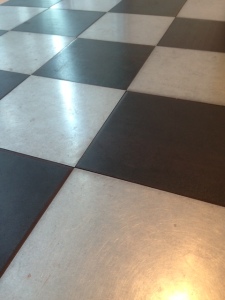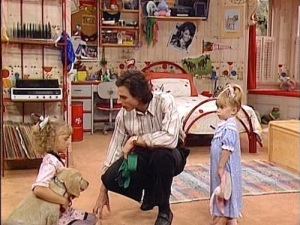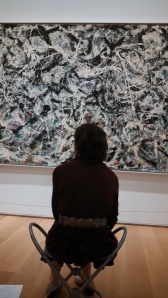It’s the end of a day that never happened at the AIC. By this time I would have been back home after two trains and a bus ride back from the Loop. I never minded the one-hour-and-fifteen-minute-each-way commute, or the 6:25am wake up call. This in itself was significant; it meant I was truly doing something that I loved, enough to override the chronic grogginess that plague my mornings.
Week 8 was a busy week: Tuesday was an adult highlights tour with Hana, Wednesday was a Chagall talk on the America Windows with April, and Thursday was a tour for students who were visually impaired, with Hana, April, Allie, Felicia and Alessandra.
We also had a chance to meet the donors of our internship program. It was incredibly rewarding to meet them and talk to them about what we accomplished in the last eight weeks. Being able to reflect on all the work we did together as a group, to the family that made it all possible, was the best way for us to come to terms with the fact that it was all ending very soon.
I participated in an unusual adult tour in my last week, a 30-minute talk on a single piece of art rather than a tour of three or more objects. I thoroughly enjoyed this tour format, especially with an object like the America Windows where there was so much to look at in a location that felt contained and cozy. I really enjoyed collaborating with April because we could support each other with our different strengths. She was very good at remembering facts and the chronology of things, while I felt more comfortable facilitating discussions about mood and symbolism. Working in a collaborative partnership (from lesson planning to execution) was extremely rewarding for me, when I found myself thinking significantly more efficiently and creatively than when I was working alone. From this experience I think I have learned that, similar to classroom teaching, I would much rather co-teach an art object on a tour than try to lead a whole discussion alone.
My final tour of the internship was with a group of students who were visually impaired, and I could not have asked for a more rewarding ending to my experience at AIC! Researching for this tour was a great way to analyze the structure of the museum from a new perspective. I found out that there was a lot of current research going on in making museums more accessible for individuals with diverse abilities.
In my time here at the museum, I must admit I constantly saw art being touched. Being an art maker and handler of my own artwork, half of the pleasure is in the tactile sensation of the materials, existing without barriers of a frame, glass or velvet rope. This tour made me think more about this paradox; how art comes into existence through the hand, but is then deprived of the human touch once it becomes a finished piece. It all seemed so silly to me the more I thought about it.
We took four students on our tour, three had varying degrees of partial sight and one student was completely blind. My favorite conversation came at Carl Andre’s Steel Zinc Plain. The student who was completely blind stepped on the platform first and spent some time walking around the tiled surface and touching the edges of the platform with her white cane to decipher its shape. It was obvious how much she was enjoying this process, having the artwork all to herself to step, turn and tap in order to better see it. Afterward, we had all students get down on the floor and touch the tiles to distinguish the different materials they were made of. They connected the alternating pattern to that of a old kitchen floor, and also made note of the temperature of the tiles.
I ended the conversation by asking them if they felt differently about a type of artwork that allowed viewers to walk over it. Did the artwork gain or loose any value or significance by being on the floor? I expected them to reflect on how a piece might be less valued if left on the floor and how walking on someone else’s work could seem a bit disrespectful. However, the student I mentioned above surprised me with her perspective. She appreciated having a work of art leave the walls and enter her space, how it allowed her to approach it and discover it through her normal process of touch and tapping. Listening to her talk made me realize how completely isolating it must feel to be without sight in a visual art museum. I imagined a parallel situation of feeling lonely in a room full of people; it is hard to appreciate the company when you cannot connect with others. I believe the artwork wants to connect with all viewers, regardless of the visual abilities of its audience, and that touch only seems the most direct way to do so.
Being so fresh out of this experience, it is hard for me to conceptualize the big picture of how this internship impacted me as an artist/educator. One thing I can say for sure is that this internship completely changed the way I saw the medium I thought I was most familiar with. Before this experience, I looked at art only for what I could get out of it in terms of technique. Now, I see conversations between artists and movements, technique and history, spontaneity and process. Art is much more alive to me now than simply objects moving along a conveyer belt of white walls. I have all my peer interns to thank, for passing on their knowledge and diverse interests in art conversations with me. I have the mentors to thank, for supporting me in my insecurities and training me on how to share the looking process with you, the viewer. Thank you ALL for lending you eyes, ears and most importantly, your thoughts.





































